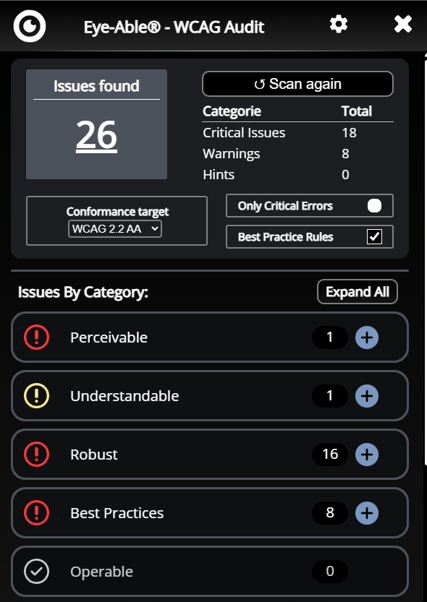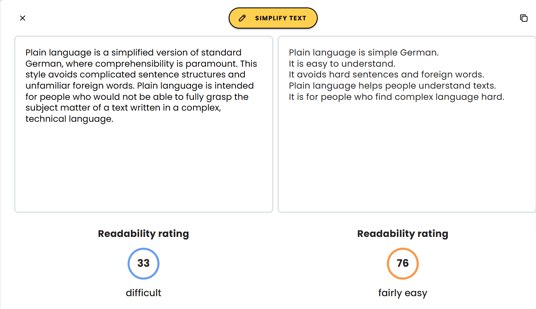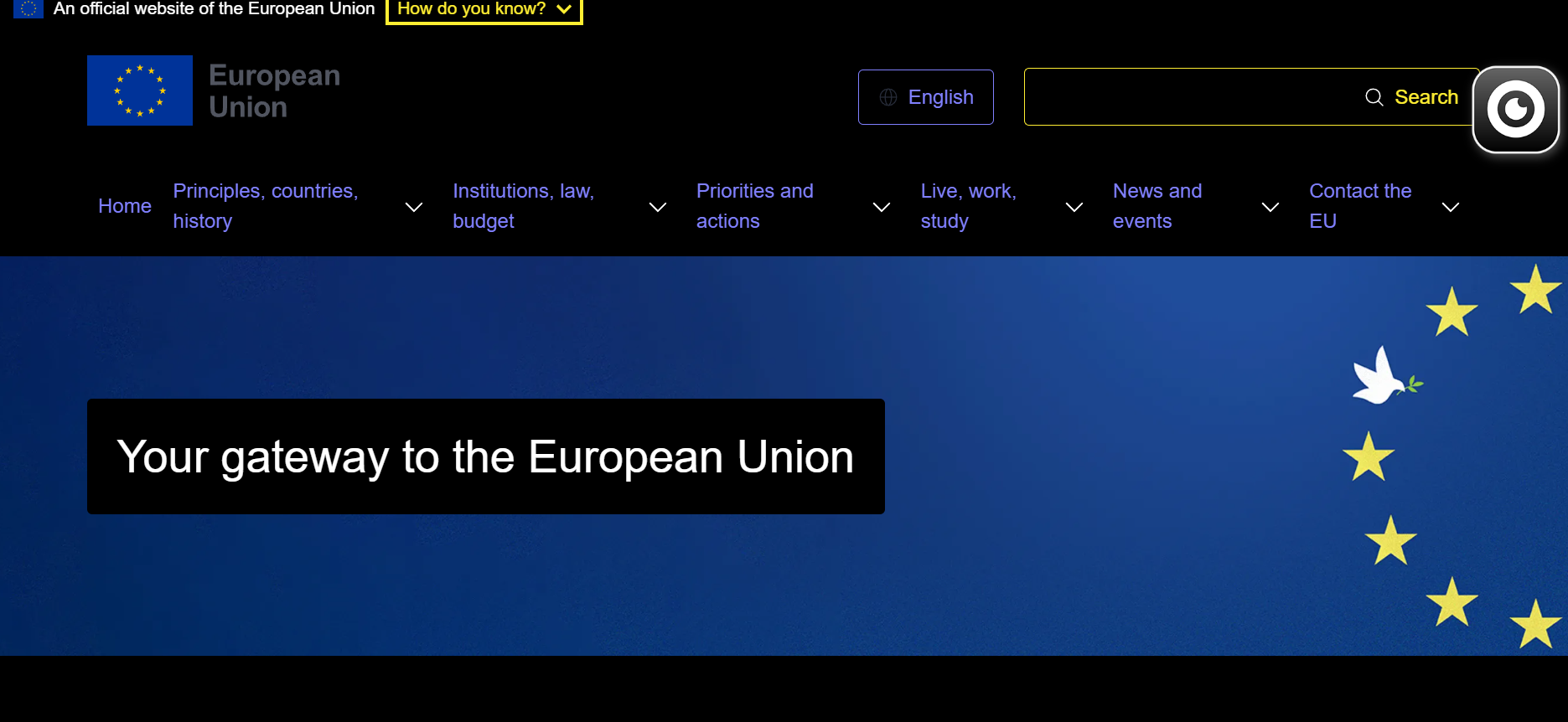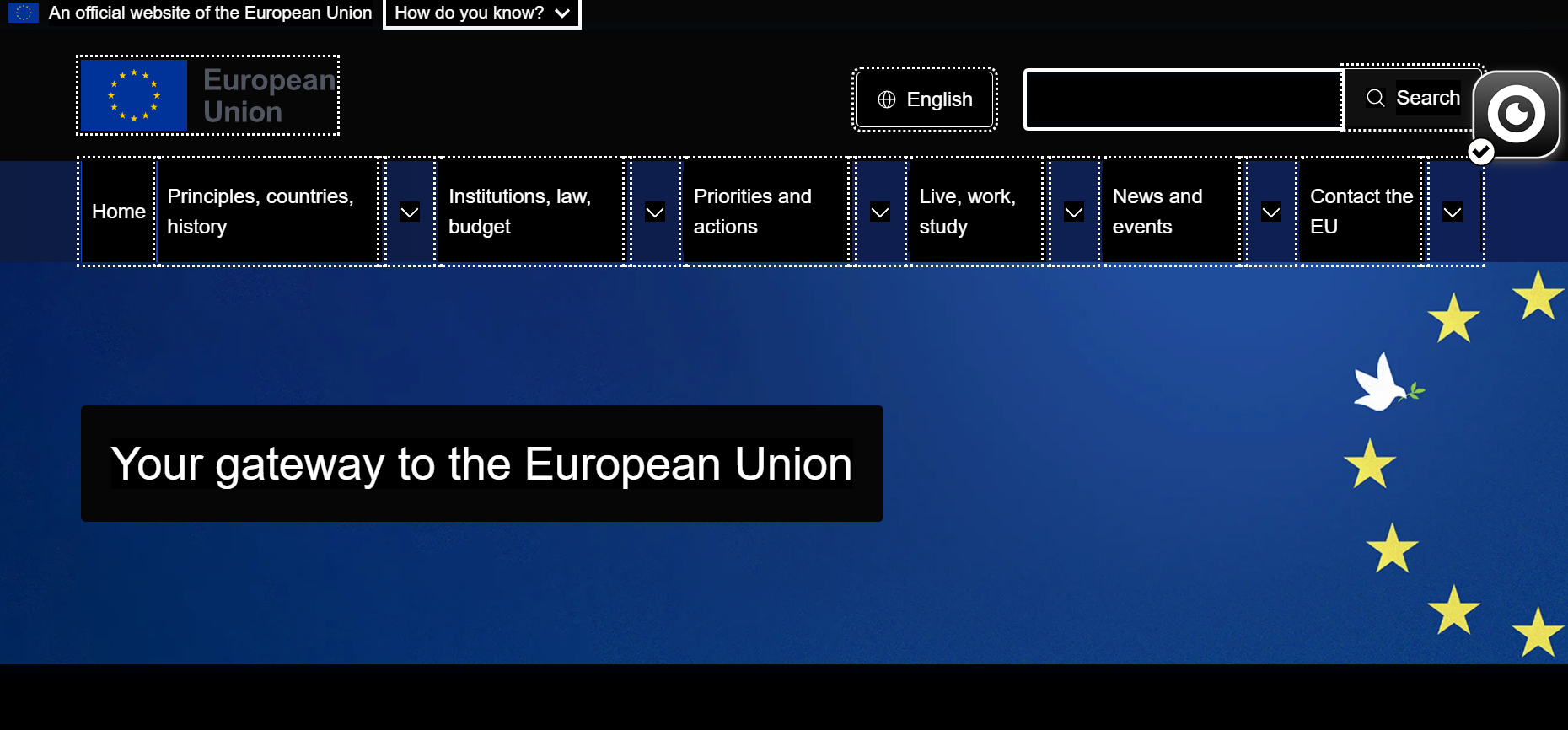Statement on Overlays and the Positioning of Eye-Able®
Introduction
Eye-Able is not a “classic” overlay, but rather pursues a sustainable and holistic approach to improve the accessibility on the internet.
Eye-Able includes a wide range of products and software modules that help analyze and improve website accessibility in various ways. The most important aspect of our approach regarding overlays is that Eye-Able is much more than just assistive technology (Assist).
Primarily, Eye-Able included other modules, such as an automated testing software called Eye-Able Audit and Report. None of the Eye-Able solutions promises or enables automatic implementation of technical standards (EN 301549 or WCAG 2.2).
Therefore, we fully agree with the DBSV statement: Digital accessibility cannot be installed. Accessibility is a process, but there are tools that can support this process. Ultimately, accessibility should always be improved by and for people. An important part of Eye-Able is therefore our testing team, which consists to a large extent (60%) of people with disabilities.
Eye-Able's Modules
Currently, Eye-Able consists of the following modules:
-
Audit and Report: An automated WCAG testing software that detects errors in website code and provides users with suggestions for improvement. The entire domain with all subpages is scanned at regular intervals.
-
Assist: A visual assistance software for websites and as a browser extension.
-
Translate: A translation function for websites into any languages such as English, French, and more.
-
Simple Language: A translation feature for texts into simple language. The module facilitates the creation of content in simple language. Translations can be manually corrected.
-
Service: Deployment of our team of experts and IAAP-certified testers, many of whom live with disabilities themselves. The offering includes manual testing of websites against WCAG, workshops, creation of accessibility statements, and consulting.


The Visual Assistance Software Eye-Able Assist
The assistive technology Eye-Able Assist originated from a research project in close cooperation with the Vocational Training Center Würzburg and the Blind Institute Foundation. The goal is to provide people without their own assistive software easy-to-use help functions on the internet.
The functions include the most important adjustments that emerged from numerous interviews, such as:
-
Enlargement of fonts and controls
-
Various contrast modes
-
Blue light filter
-
Read-aloud function
-
Color weakness filters
-
Functions to reduce page content (e.g., images or animations)
A trigger for developing Eye-Able Assist was the realization that existing functions in operating systems or browsers are still insufficient or unclear for many users.
Assist, which can be installed as a website plugin or directly as a browser extension, aims to provide easy access here. The software is not targeted at blind people or users of screen readers, but at users without their own assistive software. Tests have ruled out any negative impact on screen readers caused by Assist.
The DBSV website also offers users, for example, an alternative view with various contrast colors and a read-aloud function (https://www.dbsv.org/ansicht.html). Eye-Able Assist aims to provide the same added value with additional features easily on any website.
An important principle is that every installation of Assist is manually adapted and optimized to the website. This fixes issues often related to the contrast function of the operating system or browser functions.
Contrast comparison:
The EU homepage with Windows contrast mode:

The EU homepage with Eye-Able Assist:

The main benefit lies in extending an already accessible website to meet certain WCAG AAA requirements and beyond.
We also agree with the conclusion of the BFIT Bund assessment:
“Overlay tools can improve already existing accessibility by fulfilling additional criteria of the WCAG AAA conformance level.”
(As of 22.05.2024 https://www.bfit-bund.de/DE/Publikation/einschaetzungoverlaytools.html)
Our Implementation of Important accessibility Criteria at Eye-Able Assist:
- Every major update is tested externally for BITV conformity. A new test report is planned for the end of 2025.
-
The software is used and tested daily by people with disabilities to exclude any impact on other assistive technologies such as screen readers. Regular tests include JAWS, NVDA, VoiceOver, Dragon, SuperNova, ZoomText, and Windows features like the built-in Narrator screen reader.
Assist is already active on several thousand websites and no negative feedback has been received, including from the websites of the Blind Institute (https://www.blindeninstitut.de/de/startseite/) and BFW Würzburg (https://www.bfw-wuerzburg.de/).
Eye-Able itself employs several staff members with visual impairments, who have become active and independent employees thanks to the software. -
Existing keyboard shortcuts or commands on websites are automatically detected and not overridden. Generally, no conflict with existing keyboard shortcuts of other assistive software is known.
-
Eye-Able Assist was developed with people with disabilities. This is reflected in the high-contrast color design, keyboard and screen reader operability, and overall structure. All functions are easily perceivable and operable.
-
Eye-Able Assist does not attempt to automatically correct errors in page code, such as missing labels on images/controls or structure. The correction of these errors is done via semi-automatic detection with Audit and Report combined with manual testing and assisted manual correction.
-
Assist collects no user data and can be fully integrated locally on the website’s servers. No connections to external servers are established.
If integrated via Eye-Able’s servers, all data streams remain within the EU.
All integration options have been checked for GDPR compliance.
Conclusion
Eye-Able is much more than the visual assistance software Assist and includes:
-
Automated testing software (Audit & Report),
-
Translation functions,
-
Support for creating texts in simple language,
-
And manual testing with consulting.
Eye-Able Assist is intended as an extension to a website to provide added value for people without their own assistive software, but it does not aim to make the site EN 301 549 or WCAG compliant.
We firmly believe that accessibility cannot be installed automatically and advise our clients accordingly. Software like the Eye-Able modules is a great help in removing barriers and improving accessibility—especially for website operators who are not experts in the field of accessibility themselves.
You can find this statement as a PDF here.